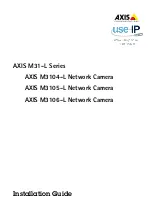
11-2
Cisco ME 3800X and 3600X Switch Software Configuration Guide
OL-23400-01
Chapter 11 Configuring Ethernet Virtual Connections (EVCs)
Supported EVC Features
Supported EVC Features
•
Service instance—you create, delete, and modify EFP service instances on Ethernet interfaces.
•
Encapsulation—you can map traffic to EFPs based on:
–
802.1Q VLANs (a single VLAN or a list or range of VLANs)
–
802.1Q tunneling (QinQ) VLANs (a single outer VLAN and a list or range of inner VLANs)
–
Double-tagged frames mapped to EVC based on C-tags (wildcard S-Tags)
–
Cisco QinQ ethertype for S-tags
•
Bridge domains—you can configure EFPs as members of a bridge domain (up to 64 EFPs per bridge
domain).
•
Rewrite (VLAN translation)
–
Pop symmetric only—the supported rewrite configuration implies egress pushing (adding a tag)
pop 1 removes the outermost tag
pop 2 removes the two outermost tags
pop symmetric adds a tag (or 2 tags for pop 2 symmetric) on egress for a push operation
–
QinQ with rewrite
–
Ingress rewrite is not supported
•
EVC forwarding
•
MAC address learning and aging
•
EVCs on EtherChannels
•
Hairpinning
•
Split horizon
•
Layer 2 protocol tunneling and QinQ
•
EVC MAC address security
•
Bridging between switchports and EFPs
•
MSTP (MST on EVC bridge domain)
•
EFP statistics (packets and bytes)
•
QoS aware EVC/EFP per service instance
These Layer 2 port-based features can run with EVC configured on the port:
•
PAGP
•
LACP
•
UDLD
•
LLDP
•
CDP
•
MSTP
















































